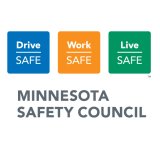What is the combined noise level when two machines/noise sources that each measure 90 dBA individually are running simultaneously?
Actual sound levels must be measured with a calibrated sound level meter or dosimeter and will vary depending on equipment operation and the immediate physical environment, but a reasonable prediction is about 93 dBA. Decibels are calculated using a logarithmic scale, so they cannot be added, or subtracted, arithmetically. The human ear can detect an amazingly broad range of sound pressures, from very tiny changes in air pressure such as a rustling leaf to immense pressure waves, such as those associated with a roaring jet engine. For this reason, scientists came to agree on a more manageable method for computing sound levels. Sound pressure measurements are converted to decibels using a logarithmic scale in order to compress numeric values into a smaller, and less unwieldy, range.
Based on formulas used for calculating decibels, doubling the sound pressure results in a 3 dB increase. Halving sound pressure results in a 3 dB decrease. In our example, two noise sources each producing 90 dBA combine to produce approximately 93 dBA. For this reason, it's important to remember that small increases or decreases in dB can actually reflect large changes in sound energy. Another way to think about it, increasing noise by 3 dB could indicate a significant increase in noise exposure and hazard. In turn, using an engineering noise control or a more effective hearing protector to reduce an employee's noise exposure by 3 dB could be a significant achievement!
- How often do workers need to be exposed to noise throughout the year before we are required to include them in our company's hearing conservation program?
- Does working in noise increase the risk of accidents?
- What is the difference between a hearing loss and a hearing shift?
- What is NRR or Noise Reduction Rating?
- Why should we conduct hearing protection fit testing?





